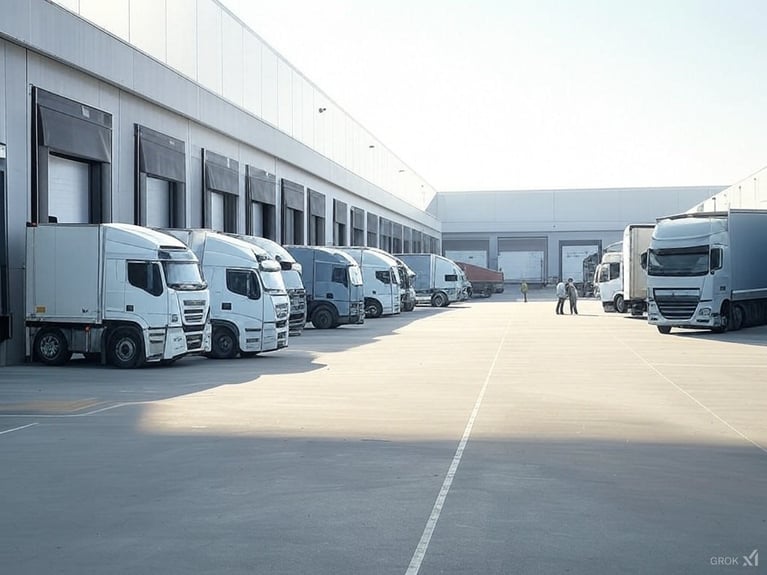
The Cost of Manual Freight Booking: Why Spreadsheets Kill Your Growth
In 2024, it might surprise you to learn that over 60% of growing businesses still rely on spreadsheets and manual data entry for their freight booking processes. Even more shocking? We've encountered businesses generating $100M+ in revenue who continue to manually book freight for every single order.
While spreadsheets might seem like a cost-effective solution, they're silently sabotaging your business growth. Let's uncover the true cost of manual freight booking and why it's time to evolve your shipping operations.
The Hidden Costs of Manual Freight Booking
1. Labor Costs and Time Waste
Picture this: Your shipping coordinator spends 15-20 minutes manually entering over 50 data points for each shipment. For a business processing just 50 shipments daily, that's:
- 12.5-16.7 hours spent daily on data entry
- 250-334 hours monthly
- 3,000-4,000 hours annually
At an average salary of $45,000 for a shipping coordinator, you're spending $21,600-$28,800 annually just on manual data entry.
2. Error-Related Expenses
Manual data entry inevitably leads to errors. Industry studies show that manual shipping processes have an average error rate of 6%:
- Wrong addresses
- Incorrect package dimensions
- Missing special handling instructions
- Inaccurate weight calculations
Each error can cost between $50-$150 to rectify, not including:
- Expedited shipping charges
- Customer service time
- Reputational damage
- Lost customer lifetime value
3. Suboptimal Carrier Selection
Without automated rate shopping across carriers, you're likely overpaying for shipping:
- Average overspend: 20-40% per shipment
- Missed volume discount opportunities
- Inability to quickly adapt to rate changes
- Limited carrier options due to manual comparison constraints
4. Scalability Roadblocks
As your business grows, manual processes become increasingly problematic:
- Linear relationship between order volume and labor costs
- Hiring and training bottlenecks
- Increased error rates during peak periods
- Limited ability to expand to new markets or channels
The Real-World Impact: A Case Study
Consider FastGrow Electronics, a mid-sized electronics retailer:
- Previous: 200 daily shipments, all manually processed
- Annual shipping spend: $2.5M
- Three full-time shipping coordinators
- Average error rate: 5.8%
After automating their freight booking process:
- 90% reduction in manual data entry
- 32% decrease in shipping costs
- Error rate dropped to 0.3%
- Redeployed two coordinators to strategic roles
- Annual savings: $875,000
Breaking Free from Spreadsheet Dependency
1. Assess Your Current Process
Start by documenting:
- Time spent on manual entry
- Error rates and associated costs
- Current shipping spend
- Growth limitations
2. Calculate Your True Costs
Consider all factors:
- Direct labor costs
- Error correction expenses
- Opportunity costs
- Customer satisfaction impact
- Growth limitations
3. Evaluate Modern Solutions
Look for systems that offer:
- Automated data entry
- Multi-carrier rate shopping
- AI-powered optimization
- Scalable architecture
- Integration capabilities
The Path to Automation
Modern Transportation Management Systems (TMS) offer:
- Automated data population
- AI-powered carrier selection
- Real-time rate comparison
- Error prevention systems
- Scalable architecture
Key benefits of automation:
- 90% reduction in manual data entry
- Up to 40% savings on shipping costs
- 99.9% accuracy rate
- Unlimited scalability
- Improved customer satisfaction
Making the Transition
The journey from spreadsheets to automation doesn't have to be daunting:
- Start with a thorough audit of current processes
- Identify key pain points and cost centers
- Research and evaluate TMS solutions
- Plan for phased implementation
- Train team members on new systems
- Monitor and optimize performance
Conclusion
The true cost of manual freight booking extends far beyond the visible labor expenses. In today's competitive market, relying on spreadsheets isn't just inefficient—it's a strategic liability that's actively holding back your growth.
As shipping volumes increase and customer expectations rise, the question isn't whether to automate your freight booking process, but when. Every day spent with manual processes is another day of unnecessary costs, errors, and missed opportunities.
Ready to calculate the true cost of manual freight booking for your business? Our team can help you analyze your current processes and identify potential savings. Schedule a consultation today to learn how automation can transform your shipping operations.



Add Your Comment